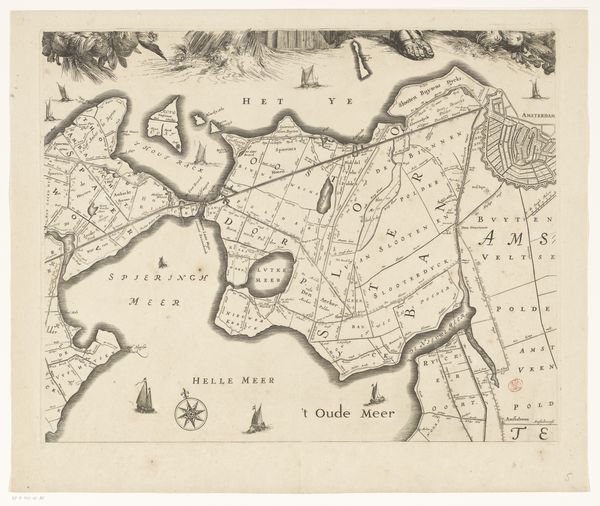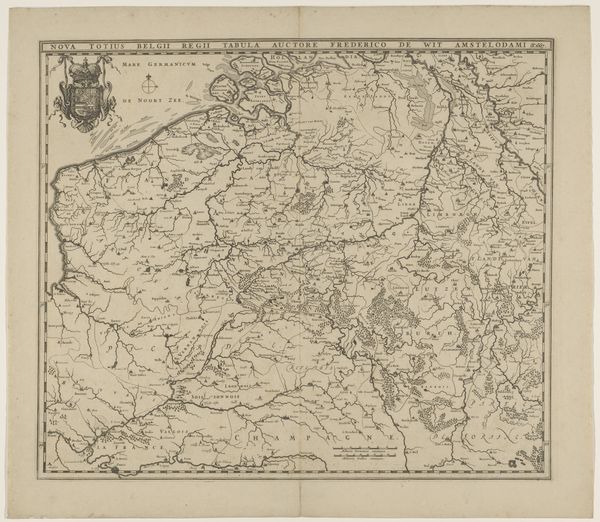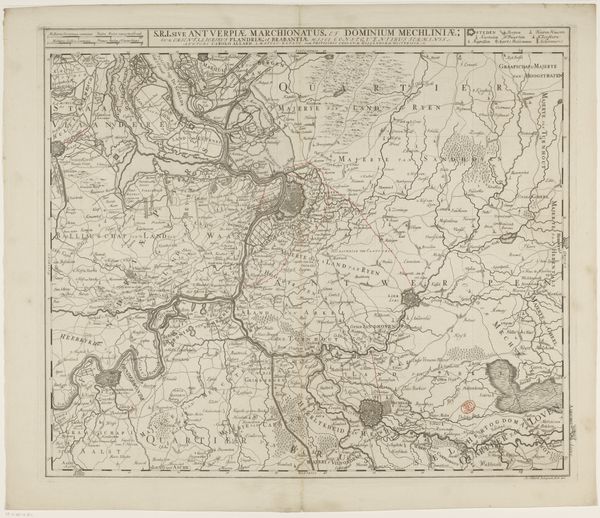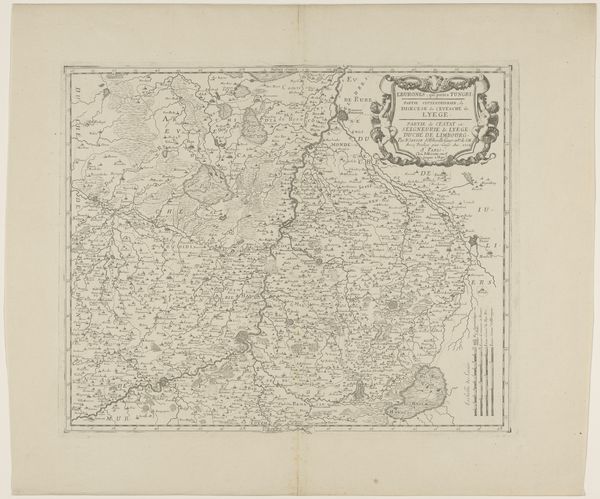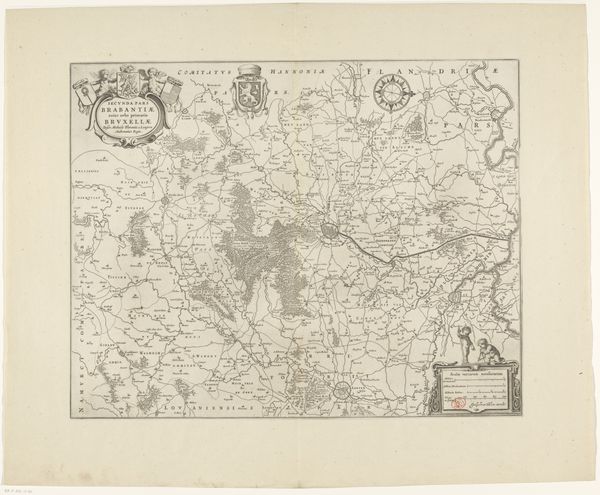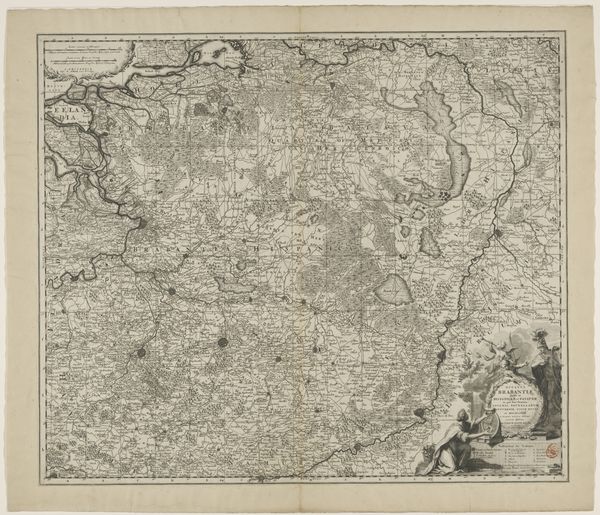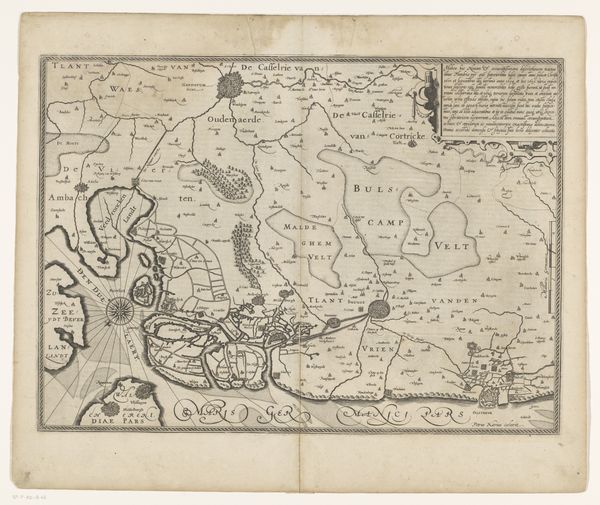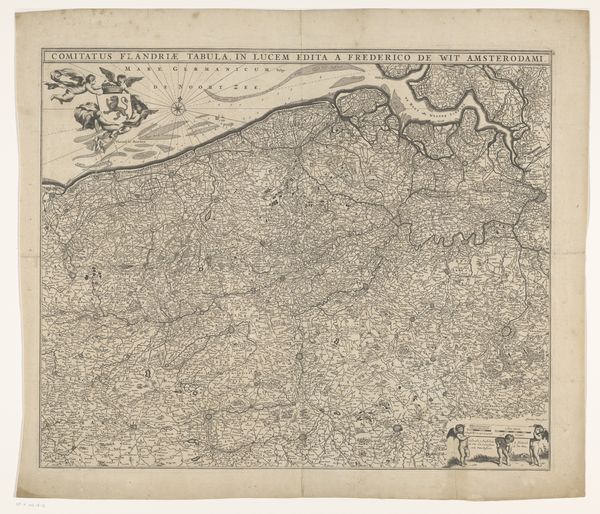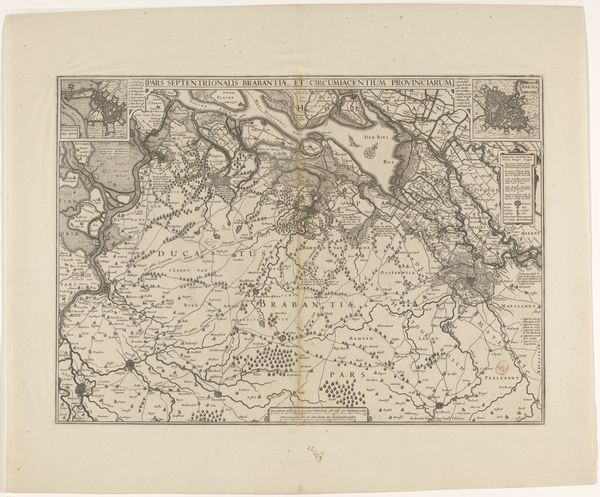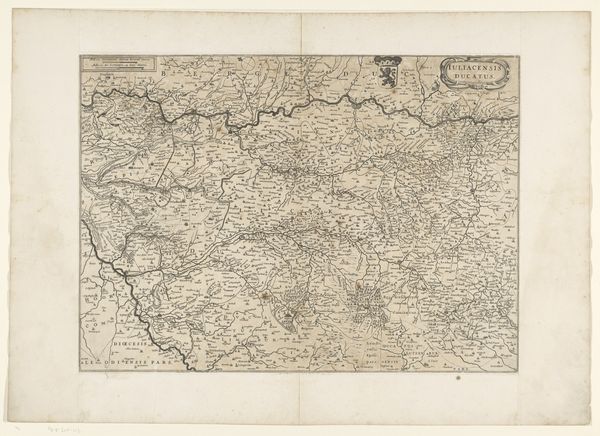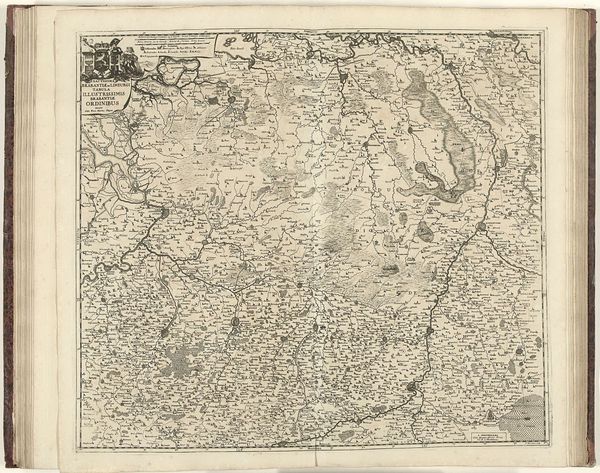
Kaart van de Schermer na voltooiing van de bedijking en verloting van de kavels, 1635 after 1635
0:00
0:00
print, engraving
#
dutch-golden-age
# print
#
landscape
#
engraving
Dimensions: height 470 mm, width 563 mm
Copyright: Rijks Museum: Open Domain
Curator: This engraving, "Kaart van de Schermer na voltooiing van de bedijking en verloting van de kavels, 1635" by Claes Jansz. Visscher, offers a fascinating glimpse into the Dutch Golden Age, wouldn’t you agree? It's held here at the Rijksmuseum. I'm immediately drawn to the geometric precision of the landscape. Editor: It’s striking how orderly it all is. All of those little divisions of land. What do you see in this piece that I might be missing? Curator: Well, it depicts a very specific moment in history – the transformation of a lake into usable land. But more than that, it speaks to a complex relationship between humans and nature. The draining of the Schermer was not simply a feat of engineering; it was an act of claiming ownership, reshaping the environment to serve human interests. The rigid grid system imposed on the landscape reflects a desire for control, mirroring similar power structures within society itself. Editor: That makes sense. It’s almost like a visual representation of dominance. But were there dissenting voices at the time, about changing the landscape so drastically? Curator: Undoubtedly. While the land reclamation brought economic opportunities, it also displaced communities and disrupted existing ecosystems. Understanding whose voices are represented—and whose are silenced—in historical records like these maps is key. It's about acknowledging the full spectrum of human experiences, including those impacted by environmental change and societal power dynamics. Does it shift your initial view? Editor: It definitely does. I now see a representation of both progress and potential oppression. It really reframes how I initially understood the artwork. Curator: Precisely! By looking at art through the lenses of power, identity, and social change, we uncover layers of meaning that enrich our understanding of history and its lasting effects on our world. Editor: Thanks! I learned to appreciate the deeper layers embedded within its surface, linking art, society, and the environment in complex ways.
Comments
No comments
Be the first to comment and join the conversation on the ultimate creative platform.
